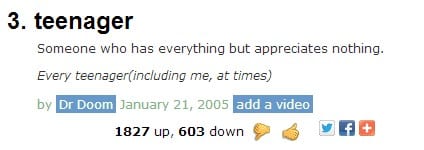The Laws Of Parenting Physics
If you studied science in college, you probably have a passing familiarity with the laws of physics as defined by Newton, Euler, and Fermat. If you are a parent, however, you may also have realized that just as Einstein’s laws of relativity superseded Newton’s laws of motion, there are things your children do that don’t seem, strictly speaking, to obey the laws of nature your professors explained to you. How can a thirty-pound toddler suddenly weigh a thousand pounds when you’re trying to put him in a car seat against his will? How does time pass so slowly during an episode of Caillou? Let’s explore the laws of parenting physics together (and don’t worry, there’s no pop quiz at the end this time).
1. Every toddler in motion remains in motion until acted upon by an outside force.
Outside forces include: cute dogs that need to be petted, an unattended cookie, or a thirty-seventh re-airing of Frozen. Whatever buys you enough time to drink a cup of coffee.
2. Every toddler at rest remains at rest until someone slams the garage door, are you serious, GOD DAMN IT HONEY, YOU HAVE TO CLOSE IT CAREFULLY.
No, no, it’s fine. I didn’t want to get anything else done today. Your laundry, for example. Or your supper.
3. The damage a small child can inflict is equal to the child’s weight multiplied by his age, multiplied again by the cost of the object in question.
The Ogden Damage Scale ranges from 0 (cloth books, soft blocks) to 10 (Grandma’s antique tea cups, the Mona Lisa, mommy and daddy’s corneas).
4. For every action you take as a parent, there is a grossly disproportionate reaction from your child.
“No, you may not have another cookie.” “WHY DON’T YOU JUST LET ME STARVE TO DEATH THEN.”
5. As naptime gets closer, the weight of a child approaches infinity.
Much like a cat that does not want to be lifted, a small child who wants a nap right. now. becomes heavier and heavier. Fortunately, unlike cats, small children are not equipped with retractable claws, although toddler teeth are unfortunately nearly as sharp as their feline counterparts.
6. A toddler travels between two points along the path of longest time.
For some reason, “come to dinner”, when interpreted in toddler-ese, translates as “please play with every toy in the living room, get into a fight with your sister over Lego bricks, and bring your winter boots to the kitchen table”.
7. A child in a bathtub displaces an amount of fluid equal to at least three times the amount of water you put in the tub in the first place.
How? How do they get water on the ceiling? Maybe because you refused to get them a pool, they decided to make their own on the bathroom floor.
8. Nature abhors a wall without fingerprints.
Why did your 24-year-old self think it was a good idea to paint all the walls in Matte Eggshell? I don’t know, but good luck explaining the smeared food and crayon marks over the doorjamb when you move out someday.
(Image: Guryanov Andrey/Shutterstock)






